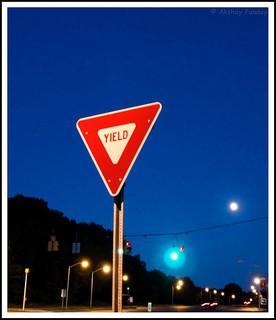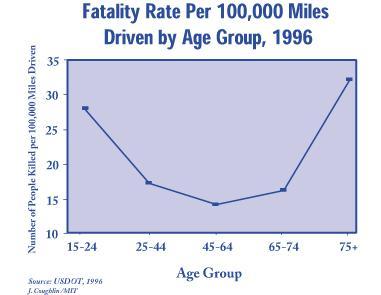
Photo by theackshay.
Many people hold the stereotype that older drivers cause a lot of crashes. While driving does grow difficult for older adults, younger drivers still cause more accidents.According to Consumer Reports,
"Mile for mile, the crash rate for drivers ages 16 and 17, for example, is almost nine times as high as that for middle-aged drivers. People 80 and older are involved in 5.5 times as many fatal crashes per mile driven as middle-aged drivers."
Yes, teens crash more, but older adults are harmed more because they are more frail.
The Insurance Institute for Highway Safety illustrates that older drivers sustain more injuries and fatalities in car accidents. Here is a similar graphic from the US Department of Transportation:

Older drivers bring their experience with them as they age, helping them to make adjustments to compensate for age-related changes to their reaction time, processing speed, executive function, attention, vision, strength, stamina and agility. Most older adults do a good job "policing" themselves.
The types of limits or self-regulating behavior employed by older drivers include the following:
- reducing their overall amount of driving
- reducing their rate of speed
- avoiding driving at night
- avoiding highway/freeway driving
- avoiding driving in inclement weather
- avoiding left turns
- avoiding dense traffic
- avoiding unfamiliar routes
- avoiding driving long distances
Even after adopting self-regulating behaviors such as these, a 2009 study by Ross et al found that older adults (65+) were still twice as likely to cause a crash. Other studies work to specify who among older adults are at most risk. These are older drivers who closer to the upper age limits (85 rather than 65), have poor vision and poor overall health.
Individuals vary greatly in their abilities, so it's important not to put an age limit on driving. Some are poor drivers at 50; others are good drivers at 80. It's very individual.
Related:
Don't Be a Boy Scout: Preserving the Independence of Older Adults

